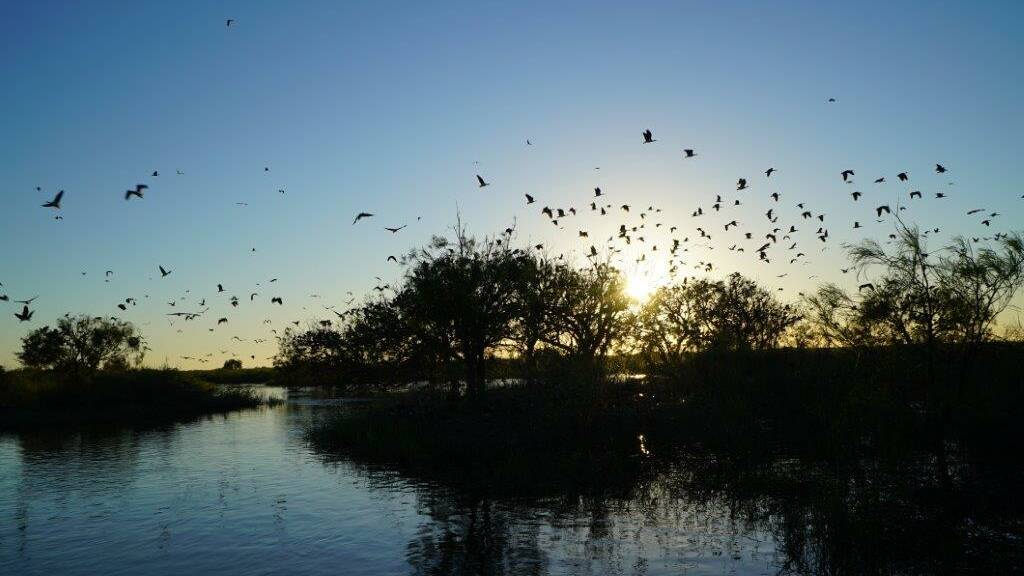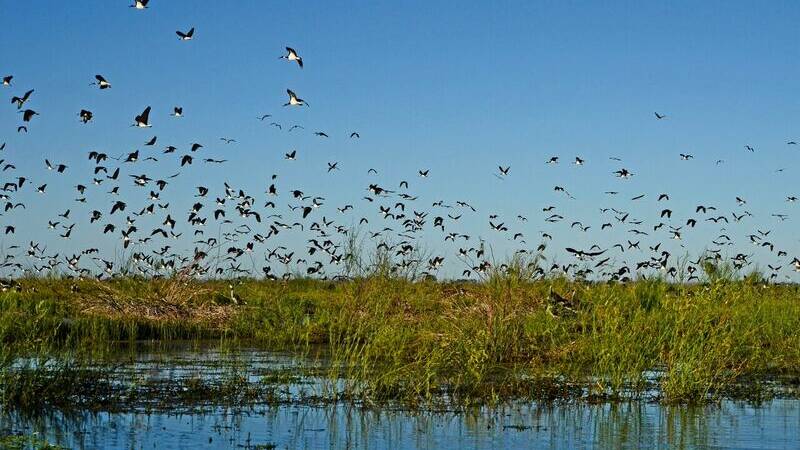Subscribe now for unlimited access.
$0/
(min cost $0)
or signup to continue reading
A 30-year bird count has been completed and the results published worldwide.
According to the study there has been an estimated 70 per cent reduction in migratory water birds in the past 30 years in the Murray Darling Basin.
Interestingly, 2016 results were excluded from the study where we saw five months of extensive flooding.
The bird survey is counted by air, where, Professor Kingsford, an original member of the Wentworth Group, flies over designated wetland sites across Australia at tree level counting water birds as they fly up in front of his plane.
This would appear to be a haphazard way to collect reliable data.
This is especially the case when we know our MIA and Riverina farms are a massive refuge for vast amounts of bird life and they are excluded from the count.

Local ecologists and farmers on the ground question these results.
The ‘Bitterns in Rice’ program is one example of locals successfully monitoring bird life.
The concept that our bird life is depleting because they are not where the plane flies is unrealistic.
Migratory water birds are highly adaptable to our ephemeral boom/bust environment and are usually found where their food source is secure.
Birds don’t ask if a water source is natural or man-made.
Recently, Professor Grafton, another original member of the Wentworth Group, published an opinion piece claiming there was little to show for the 2000GL of government acquired environmental water, therefore more was needed.

If several major flood events as well as 2000GL of environmental water are not achieving anything worthwhile then all of us need to ask some hard questions.
The Ramsar listed wetlands are concerning locals as the continual inundation is impacting negatively on some bird breeding events.
Under the current mindset one of our largest bird and fish breeding areas, Menindee Lakes, has been inappropriately drained.
Our natural inland environment is ephemeral.
Responses are almost instantaneous when water is added.
The assertion that it is going to take a long time with huge amounts of water and money to achieve objectives is a fallacy.
The study is antiquated in its approach and we need to ask – what were the modelling assumptions based on?
What other cost effective ways are there to monitor migratory water birds?
And why do we continually subject ourselves to flawed assumptions at a huge cost to our economy and regional rural reputations?

